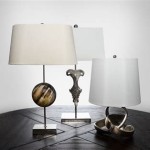Interior Opaque Glass Doors: A Guide to Functionality and Elegance
Interior opaque glass doors are a versatile and stylish choice for dividing spaces within a home. They offer a blend of privacy, light diffusion, and aesthetic appeal that makes them suitable for a wide range of applications. This guide will explore the essential aspects of interior opaque glass doors, including their benefits, types, materials, and design considerations.
Types of Interior Opaque Glass Doors
Interior opaque glass doors come in various types, each with its own unique design and functionality. Some common types include:
- Sliding Doors: Space-saving and easy to operate, sliding opaque glass doors are ideal for separating rooms or creating flexible partitions.
- Swing Doors: Traditional and elegant, swing opaque glass doors provide a classic touch to any interior space.
- Pocket Doors: Sliding into the wall, pocket opaque glass doors create a seamless transition between rooms.
- Bifold Doors: Folding opaque glass doors offer a flexible and versatile way to divide larger spaces.
Materials for Opaque Glass Doors
Interior opaque glass doors can be made from a variety of materials, including:
- Laminated Glass: Two layers of clear glass with an opaque interlayer, providing strength, durability, and privacy.
- Frosted Glass: A surface treatment that obscures light while maintaining translucency.
- Stained Glass: A decorative option that allows for intricate designs and patterns.
- Textured Glass: Glass with a textured surface that provides privacy without blocking light entirely.
Benefits of Interior Opaque Glass Doors
Interior opaque glass doors offer numerous benefits, including:
- Privacy: They obscure the view into adjacent rooms, providing privacy without sacrificing light.
- Light Diffusion: They allow natural light to filter through, creating a明亮 and airy atmosphere.
- Space Division: They can be used to separate spaces without creating a sense of isolation.
- Aesthetic Appeal: They add a touch of elegance and style to any interior.
- Durability: Laminated and tempered glass options provide strength and resistance to breakage.
Design Considerations for Interior Opaque Glass Doors
When selecting and installing interior opaque glass doors, consider the following design factors:
- Size and Placement: Determine the appropriate size and location for the door based on the space available and desired level of privacy.
- Style: Choose a door style that complements the existing décor and architectural features of the home.
- Hardware: Select durable and stylish hardware, such as handles and hinges, to complete the look of the door.
- Privacy Level: Determine the desired level of privacy for each space and choose an opaque glass material that provides the appropriate balance between light and privacy.
- Natural Light: Consider the amount of natural light available and choose a glass material that optimizes light diffusion while maintaining privacy.
Conclusion
Interior opaque glass doors are a functional and elegant addition to any home. They offer privacy, light diffusion, and aesthetic appeal, making them suitable for various applications. By understanding the different types, materials, benefits, and design considerations of interior opaque glass doors, homeowners can make informed decisions that enhance the beauty and functionality of their living spaces.

Interior Glass Doors With Obscure Frosted Resort Home Office Library Other By Sans Soucie Art Houzz

Jazzy S Interior Decorating Frosted Glass Doors

Translucent Doors In Dark Hallway Interior Bedroom Door Design

Interior Glass Doors 11 Bright And Modern Design Ideas Half Door
Internal Glass Doors Hinged Sliding Spaceslide

Obscure Glass Internal Doors Milk Glazed Interior Leader

Shabby Chic Decorative Glass Doors Sans Soucie Interior Bathroom

High Quality Barn Door Sliding Frosted Glass Interior Doors For Living Room And Bath China Iron Made In Com

Double Leaf Interior Frosted Glass Bathroom Sliding Door China Wooden Doors And For Bathrooms

Interior Doors Glass Etched Textured And Frosted Designs








